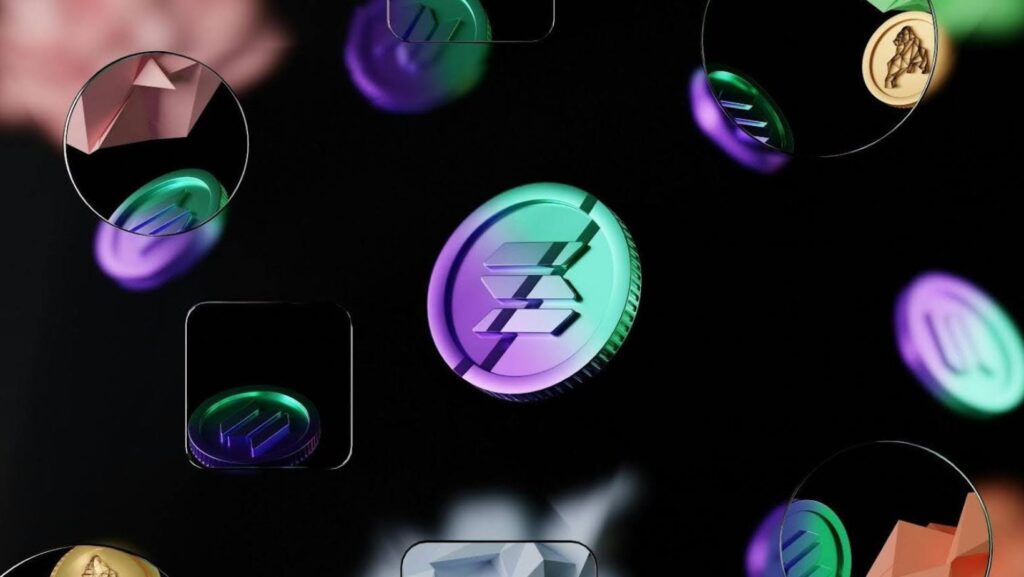
The cryptocurrency industry holds considerable potential for development, as global users contribute to its growing adoption. Crypto projects run on blockchains supported by developers’ input, which is how prominent projects like Solana reached their heights.
Solana’s ecosystem expanded due to its benefits of decentralization, scalability, and energy efficiency. The thriving community also took part in the growing interest for Solana-based NFTs and meme coins, such as Bonk, that revolutionized collaboration and bridged the gaps between decentralized sectors. At the same time, the project attracted numerous investors who already knew how to crypto but were skeptical of the coin’s potential.
That’s why it’s no wonder the Solana team reached out to other meme coins. The Dogecoin price exhibits an impressive evolution of the dog-based meme coin, presenting a promising opportunity for Solana to strengthen its relationship with other decentralized assets. So, let’s explore what brings them together.
Solana and Dogecoin are Brought Together by a Trustless Bridge
The Psy company is responsible for the new technology, which will enable Solana users to safely use Dogecoin for transactions. This is possible through a trustless bridge, which will enable the two projects to communicate while also verifying transactions and reaching consensus rapidly, without the need for third parties.
What’s most impressive about the bridge is that it can enhance the blockchains’ ecosystems. Dogecoin’s impressive market capitalization can boost Solana, especially since Dogecoin users can access Solana’s DeFi (decentralized finance), NFTs, and gaming tools. On the other hand, Solana developers will be able to tailor their strategies based on the Dogecoin user base.
How does the bridge actually work?
The bridge created by Psy is considered by experts to be a next-generation tool that validates Dogecoin’s consensus on the Solana blockchain. Compared to the regular bridges that rely on custodians, this one addressed the issue and established a trust-minimized approach.
Bridge hacks are gaining traction in the cryptocurrency world, particularly as more blockchains require these bridges to enhance communication. However, this solution eliminates this concern as it allows networks to exchange data safely. The technology shows how chains can interact with high-performance ones without intermediaries.
Every Dogecoin block header is verified on the Solana blockchain. Each block contains important information linked with the block hash or the Merkle root. As users send Doge to the chain, the system verifies the data and mints the equivalent on Solana.
Why does this matter for the two blockchains?
Solana is the leading competitor of Ethereum. It offers some of the fastest and cheapest transactions while slowly building a unique and strong community of developers who leverage innovative smart contracts and DeFi ecosystems. It’s also known that, according to Binance.com Research, “Ethereum is emerging as the institutional favorite, nearly surpassing Bitcoin in ETF inflows and cementing its role as crypto’s yield-bearing backbone.”
Therefore, Solana is still outshone by Ethereum due to its lack of recognition in the industry. This new project can propel Solana into the mainstream, showcasing its multiple possibilities for taking crypto to the next level.
On the other hand, Dogecoin is a notorious meme coin whose value has been heavily supported by its community. However, since it’s not that established on the market, it’s losing popularity, especially considering its limited use cases. Luckily, its introduction into the new project will help Solana developers gain exposure to a new coin and audience.
Why do blockchains need to communicate?
While a few years ago, blockchains wouldn’t communicate at all, or only through intermediaries, this has now changed. The benefits of decentralized communication are plenty, including maintaining one’s trustless nature and operating in a safe and transparent manner.
This is known as blockchain interoperability, and it has the potential to:
- Enhance liquidity. Some assets lack interoperability between networks, hence leading to an imbalance of resources, but interoperability helps by enabling movement;
- Diversify assets and expand the user base. Interoperability offers a shared pool of tokens that developers can move from one blockchain to another;
- Flexible payments. Users can make payments with tokens from different networks, so they can access unique decentralized apps on various blockchains;
- Better economic security. More assets, users, and liquidity mean fewer economic vulnerabilities, which is why interoperability is linked with liquidity so much;
The multiple types of blockchain interoperability solutions
Interoperability is still an area of development, so various solutions are being developed to address the issue. Blockchains need a specialized validation mechanism for data transfer and cross-chain transactions, so here’s how some employ it:
- Web2 validation requires a Web2 service. For example, users can access a centralized exchange to swap tokens, so they can deposit them on a chain and withdraw them on a destination chain;
- External validation involves validator nodes that verify the state of the source network against certain criteria. This makes it more complex as it uses a trust-minimized approach;
- Local validation implies that the blockchains involved in transactions hold responsibility for verifying each other’s state. However, this method is limited for some cross-chain contracts;
- Native validation makes the destination blockchain responsible for verifying and confirming the transaction. This is common on state machines like Ethereum and EVM-based layer-2 networks;
What are the most interoperable blockchains?
Some interoperability tools, such as the blockchains we’ll discuss, have been created with the sole purpose of enhancing and providing this feature in the cryptocurrency ecosystem. The best examples include the following:
- Chainlink uses a decentralized oracle network (DON) to support cross-chain messaging. The system uses oracles for smart contracts to receive access to real-world data;
- Wormhole has the infrastructure for cross-chain messaging by facilitating token transfers between networks in supported blockchains (Ethereum, Solana, and Binance Smart Chain);
- Cosmos provides blockchain independence and interoperability based on a specialized protocol and a hub-and-spoke architecture to help connect blockchains;

There are numerous solutions for interoperability, most of which originate from independent, decentralized brands. Still, others are linked to a whole crypto project.
Final considerations
Solana and Dogecoin collaborate on bridging the gaps in transactions and communication between their ecosystems. Now, Solana users will be able to obtain Dogecoin safely and access a vast array of decentralized tools, including meme coins and ledgers, while developers will have the opportunity to develop on new networks and explore a growing tech trend.


